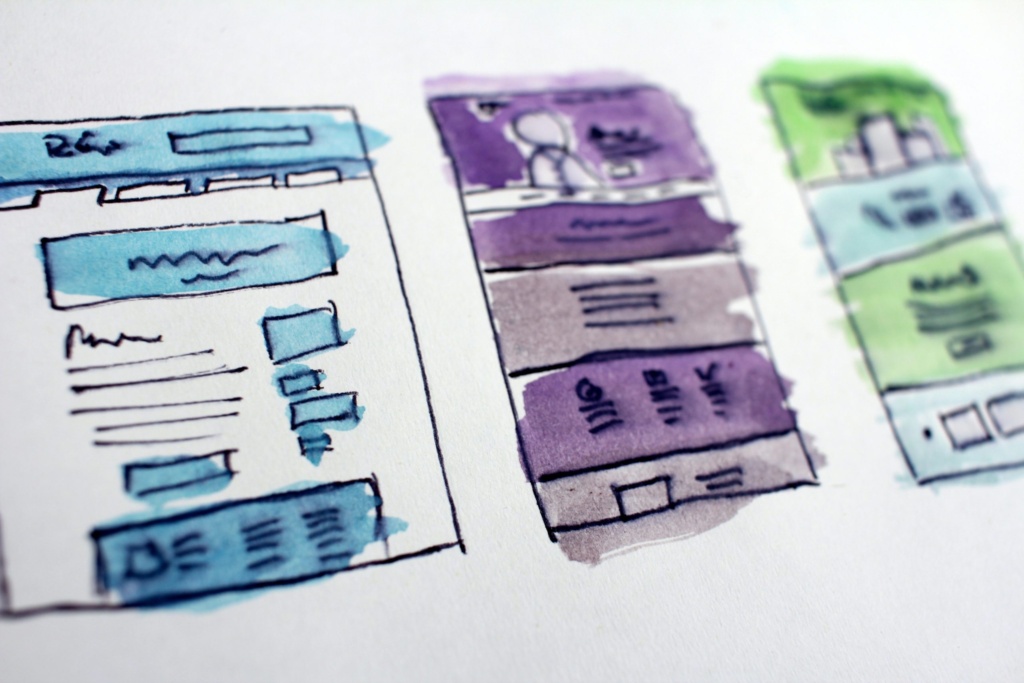Is a new website on the horizon for your healthcare, nonprofit or community organization? If so, you may be weighing the options for building it: specifically, the choice between a template and a custom-designed website.
Your brand’s website is one of its most important assets, if not the most important. And if that website doesn’t work properly — not only serving your internal team’s needs but also your audience’s needs — then it undercuts your best marketing efforts.
At the same time, a website build is one of your biggest marketing expenses. So it’s essential to do it right. If the option you choose doesn’t enable the usability, navigation and brand messaging you need, it’ll end up costing more to fix the problems in the long term.
Templates are great for indie workers, startups, and bare-bones operations. But for organizations in the health space — whether large regional medical networks with lots of outpatient offices or grassroots agencies focused on a specific aspect of care — a custom website design is by far the best way to go.
Custom website design vs. templates

Let’s start by defining custom vs. templated websites.
Most websites today are built on a standard platform like WordPress or Squarespace. These serve as both the architecture for the site and the content management system (CMS) that allows users to upload copy, images, video and more.
These platforms are widely adopted, so pretty much every web designer or developer is familiar with the code. They’re automatically updated, so they’re not likely to become obsolete. They also play nice with lots of different plug-ins — add-on modules that enable different functions, like a calendar or form fields or the like. Search-engine optimization, security, privacy, and accessibility are baked into these systems. They also interface seamlessly with existing tools like your patient portal interface.
If your old website was built years ago on a one-of-a-kind architecture and your team has battled to update content and add functionality, you’ll find either WordPress or Squarespace to be a breath of fresh air. As a CMS, both of them are easy for marketers and internal folks to update with just a bit of training.
Both of these website platforms offer off-the-shelf design templates (either free or low-cost) that promise to have your website up and running with minimal effort and no design or development assistance. Some of these themes are designed for specific markets, like finance, law or health. While that may sound appealing — hey, we can launch in a week or two! — a standard template has limitations because it’s a one-size-fits-all solution. You could wind up with a website that looks like others in your field.
And while templates may come with some of the functions you need, adding anything outside the box requires a developer’s expertise and those bolt-on tools are trickier to maintain. Plus, templates often come with functions you don’t need and make the site clunkier to manage and slower to load. The inexpensive option will wind up costing you more to fix in the long term.
Compared to a templated website, which predetermines where copy and images will go, a custom website is built to fully meet your needs, both functional and aesthetic. Because it doesn’t include extraneous features, the website is fully streamlined and loads quickly. At the same time, it allows you to add more functionality down the road as the brand evolves or expands. Need a new landing page for a marketing campaign? That’s easy. Need to update the logo across the entire website? It’s a simple swap.
Why custom wordpress websites are best for healthcare

For marketing leaders in the healthcare space — whether you’re a large hospital network or a small community nonprofit — you’re smart to go the custom route. To do so, we prefer to use the WordPress platform for its functionality, flexibility and ease of use.
For one recent client, a regional hospital system, we designed a custom WordPress website and integrated a series of tools that supported their mission and patient service. The site includes an appointment scheduler, urgent care wait time display, and multi-language functionality. And the CMS allowed the marketing team to easily update elements like practice areas and provider directories, and to quickly deploy campaigns or special initiatives.
Community health agencies we work with likewise appreciate WordPress’s simplicity and accessibility. Working with a regional nonprofit, we built a custom site — and then easily added landing pages to support their communication plans.
When you’re considering options for a new website, don’t let the word ‘custom’ scare you: By building a custom website using the WordPress platform, you’re able to place your brand’s “skin” on a well-built skeleton that can grow with you. Remember what you’re paying for: flexibility, uniqueness, stability, integration with your patient-facing systems and optimal branding.
We can help you make smart use of your website development budget — let’s talk about what you need.
Tenth Crow Creative is a brand marketing agency that creates, aligns, and promotes the external and internal messaging for organizations that support living healthier lives. Through insightful branding and compelling marketing campaigns, we help these essential organizations find their identities and effectively communicate to their stakeholders so they can fulfill their missions.

